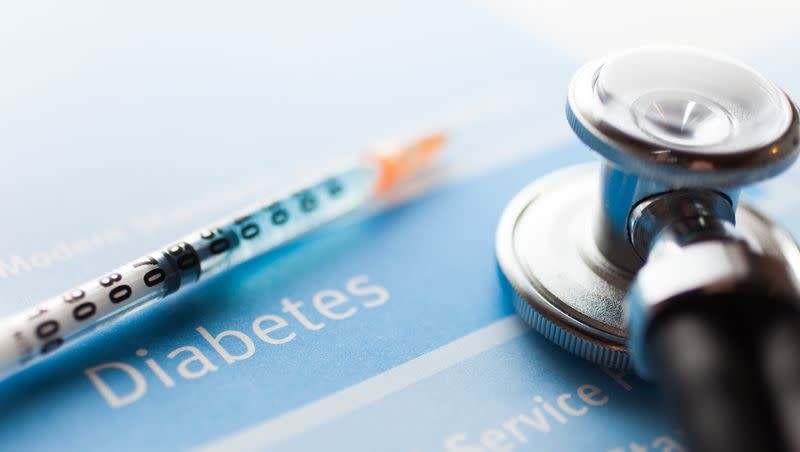In 2050, more than 1.3 billion people will have diabetes, new research suggests

The number of adults with diabetes worldwide will reach more than 1.3 billion by 2050, according to new research that blames rising obesity levels, widening health care inequalities and a failure to understand the social nature of Type 2 diabetes.
Researchers predict that the 529 million diabetes cases reported in 2021 will more than double by 2050, as no country is expected to see diabetes rates decline during the next 30 years.
“Diabetes will be a defining disease of this century. How the health community deals with diabetes in the next two decades will shape population health and life expectancy for the next 80 years,” reported the study, which was published in The Lancet and The Lancet Diabetes & Endocrinology journals.
Researchers involved in the study claim that Type 2 diabetes is “largely preventable and, in some cases, potentially reversible.” They added that a majority of cases are due to rapidly rising rates of obesity, which is cause by several factors such as socioeconomic status and poor healthcare.
Systemic racism faced by minority groups and “geographic inequality” escalates rates of diabetes, other illnesses and death around the globe, according to the researchers.
“Regardless of economic category, in every country, those who are discriminated against and marginalized suffer the most and worst consequences of diabetes,” the researchers said.
“In the USA, where the burden of Type 2 diabetes in young people has nearly doubled in the past 20 years, the highest burden is seen among Black or Indigenous American populations.”
Experts agree on the revealing nature of this research and the urgent need to confront inequalities and other factors that lead to the development of Type 2 diabetes.
“This important study underlines the sheer scale of the diabetes crisis we’re facing, both in the UK and around the world,” Chris Askew, the chief executive of Diabetes UK, told The Guardian.
“The need for concerted cross-government action to address inequalities in diabetes prevalence and outcomes, as well as the underlying conditions of ill health, such as poverty and living with obesity, has never been greater or more urgent.”
What are warning signs of diabetes?
Diabetes symptoms depend on blood sugar levels. Individuals with prediabetes or Type 2 diabetes may not show symptoms, according to the Mayo Clinic.
If you are experiencing any of these diabetes symptoms, consider seeing your doctor about getting your blood sugar tested.
Here are common signs of diabetes, per the Mayo Clinic.
Feeling thirster than normal.
Urinating a lot, often at night.
Feeling hungrier than normal.
Experiencing blurry vision.
Losing weight without trying.
Feeling tired and weak.
Feeling irritable or having mood swings.
Having sores that heal slowly.
Having more infections than normal, such as gum, skin and vaginal infections.
You can also take the free, one-minute risk test from the American Diabetes Association to learn more about Type 2 diabetes risk and prevention.
What health habits prevent diabetes?
Type 2 diabetes can be prevented or delayed with proven lifestyle changes such as increased physical activity and weight loss, reports the Centers for Disease Control and Prevention. Before developing Type 2 diabetes, most people experience prediabetes — when blood sugar levels are high but not enough for a Type 2 diabetes diagnosis.
Prediabetes is reversible and Type 2 diabetes is preventable.
If a blood test confirms you have prediabetes, you are eligible to join the National Diabetes Prevention Program lifestyle change program. The program assists prediabetic individuals reverse prediabetes through weight management, increased physical activity, maintaining a healthy diet and giving up smoking.
Here are some lifestyle changes that can help prevent or delay type 2 diabetes, according to the American Diabetes Association.
Lose extra weight. Shedding extra weight can manage your risk for Type 2 diabetes — even losing 10-15 pounds will make an impact. Simple steps that can assist you in weight loss include: eating breakfast every day, watching less than 10 hours of TV per week and cutting calories from your diet.
Quit smoking: Smoking reduces the amount of oxygen in your organs and can lead to unhealthy cholesterol and high blood pressure. Quitting can limit risk of diabetes. If you do not smoke, choose to never start.
Manage high blood pressure: Two of three people with diabetes suffer from high blood pressure or take medications to lower their blood pressure. If you have high blood pressure, work with a health care professional to form a treatment plan.
Practice regular exercise: Through regular physical activity, cells become more sensitive to insulin so it works more effectively and lowers blood sugar levels. Going on walks and reducing the amount of time you spend sitting are simple ways to get started.
Form healthy eating habits: Eating well and increasing physical activity are essential to preventing Type 2 diabetes. Everyone’s body responds in a unique way to different foods and diets. Using the Diabetes Plate Method assists in creating healthy meals that help manage blood sugar levels.

